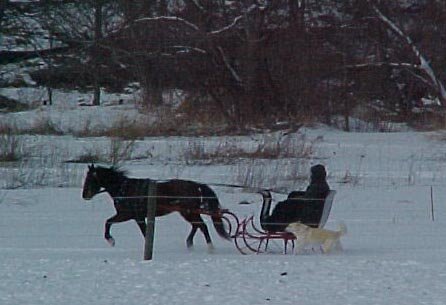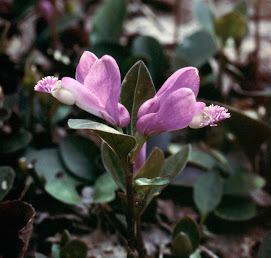Especially at night, of course they do. Most of us standing at our windows are amazed how such little mites can take whatever nature throws at them. What is different about these birds that stay with us all winter while most of our feathered friends Head for the south. Staying this far north for hundreds of generations has winterized the birds that stay with us. The majority of birds that migrate from the north are the, real snowbirds. If they can stay in the northern parts of U.S. and southern Canada where the lakes and ponds stay frozen all winter. They are the true winter birds.
Most of the birds that alive are the real insect eaters about 75 % of them are the song Birds. Of course, there are some that stay, such as the nuthatches, and the woodpeckers even they will try to find a richer source of food like suet and certain seeds from a bird feeder. If the food supply does not meet the bird’s needs they must move, usually to the south.
The best time for us to see some of Canada’s more exotic birds such as the Pine Grosbeak, a large plump Finch most sought after by birders. They long tails and have short stubby curved bills the Male has a rich pink red body with dark wings and two white wing bars. They are bird’s the northern spruce forests. Their melodic voice is loud and it carries a great distance.
In December of 1974 I was exploring a back road by, chance drove past some old apple trees in Harpursville N.Y.
In an old apple tree next to the road a small flock of Pine Grosbeaks nearly hanging over the edge of the road somewhere gray & black at leas 4or 5 were a pinkish red I didn’t know what they were right away but there was no doubt what t they were There might have been more I must have been only about 10 ft from them when I drove past I backed up and they were in no hurry to move (no camera) Phooey.
The Red Crossbill and Red winged Crossbill are also just most birders dream I never had the luck to see either of these birds they like others only appear when pine cones have a poor year. They may appear in the western states on occasion a bird that most of us are familiar with who comes down from Canada quite often is our noisy friend the Evening Grosbeak, back in the 1950s were little known locally. On Long Island I saw my first Grosbeak in 1956 a small flock of 5 or6 by 1969 nearly every other winter we had flocks as many as 25 or so.
Any way with this in mind I decided to research this a little. I knew at one time they just were rare here, however I found they did drift down to the western states when there food supply was dwindling. That was in the early 1900s. During the winter of 1916 there presence in the eastern U.S. was known. The first record of the Evening Grosbeak in New York City in 1911 the
First report of them in Main was in February the same year. The birds in several flocks remained there until May it was a treat to many to see them and they marveled at there beauty and there fearlessness . Up state in Harpursville it was a rare winter not to have them. I had flocks as many as 75. You could be in bed but they were noisy when they arrived you sure knew it. I enjoyed having them wake me.
I am getting off the track of the birds and there wood stoves. The key to survival is to keep warm and to keep their body temperature enough by getting food every day. A bird’s body
Temperature is from 108 to 110 they must stay that temperature all day and have enough energy remaining to keep their wood stove going through the night. Most small birds must eat constantly and eat 20 times the amount they eat in warm weather. Birds must have a richer source of food in winter that’s why suet and higher quality seed are important for woodpeckers and others, who normally eat insects, if you have feeders I know that some days most of the birds seem to be missing. Usually most of your birds are of mixed flocks. They usually stay together and move a mile or so from your feeder even 2 miles from your feeder is only 4 or 5 minuets from you. Of course there could be a hawk somewhere out in your yard. If so the birds will be back in less than hour. Feeders are a great attraction for a hawk a fly in Diner Dove a la Carte with a little Junco on the side.
About 3 weeks ago when I had the largest flock of Doves 34 and 50 plus Goldfinches and 20 tree sparrows Juncos, House Finches, Chickadees and others. It was about 7 o’clock herd this crash and then some one was firing a machine gun at the side of the house And at the window in the kitchen birds went in every direction I was in the living room at the time near our picture window the opposite side of the house but I could see at least 25 birds come over the roof. When I got outside there were feathers on the siding and the window the window had a small crack already about 8 inches in one corner now there is a 30 inch crack all across the window. About 15 minuets later I saw a Sharp Shin Hawk on the fence in the back yard is about 150 ft from the feeder I don’t know if he got one of the birds or not but he seemed not interested when some birds started drifting back. As much as I like the small birds I still like the Hawks and Eagles and of course The Owls just as much if even more. It had always been a mystery to me where did all these birds go at night I never found them in my yard. Every town must have
A secret cave (with a wood stove) they sure hide it well until you find out some of these mysteries yourself you might as well believe the wood stove theory. I always just figured they would make it to the nearest standoff pines Spruce or other evergreens. That is somewhat true but the tip of the icicle. I knew they used birdhouses and former nesting holes, In Harpursville I has 12 birdhouses 6 were used as nests the other 6 were used all winter as well. If you explore tracks of evergreens look on the bottom branches, of spruce & hemlock trees you almost positively will see signs of birds roosting there. Sometimes they will pack themselves together in a line they fluff up their feathers and keep each other warm. . Several years ago National Geographic photographer took a picture of 13 male Bluebirds huddled in a Bluebird house that’s pretty fantastic. That will keep you warm for now.
PS: A year in the Adirondacks, did I come back alive if so why
Bill Reeves
Temperature is from 108 to 110 they must stay that temperature all day and have enough energy remaining to keep their wood stove going through the night. Most small birds must eat constantly and eat 20 times the amount they eat in warm weather. Birds must have a richer source of food in winter that’s why suet and higher quality seed are important for woodpeckers and others, who normally eat insects, if you have feeders I know that some days most of the birds seem to be missing. Usually most of your birds are of mixed flocks. They usually stay together and move a mile or so from your feeder even 2 miles from your feeder is only 4 or 5 minuets from you. Of course there could be a hawk somewhere out in your yard. If so the birds will be back in less than hour. Feeders are a great attraction for a hawk a fly in Diner Dove a la Carte with a little Junco on the side.
About 3 weeks ago when I had the largest flock of Doves 34 and 50 plus Goldfinches and 20 tree sparrows Juncos, House Finches, Chickadees and others. It was about 7 o’clock herd this crash and then some one was firing a machine gun at the side of the house And at the window in the kitchen birds went in every direction I was in the living room at the time near our picture window the opposite side of the house but I could see at least 25 birds come over the roof. When I got outside there were feathers on the siding and the window the window had a small crack already about 8 inches in one corner now there is a 30 inch crack all across the window. About 15 minuets later I saw a Sharp Shin Hawk on the fence in the back yard is about 150 ft from the feeder I don’t know if he got one of the birds or not but he seemed not interested when some birds started drifting back. As much as I like the small birds I still like the Hawks and Eagles and of course The Owls just as much if even more. It had always been a mystery to me where did all these birds go at night I never found them in my yard. Every town must have
A secret cave (with a wood stove) they sure hide it well until you find out some of these mysteries yourself you might as well believe the wood stove theory. I always just figured they would make it to the nearest standoff pines Spruce or other evergreens. That is somewhat true but the tip of the icicle. I knew they used birdhouses and former nesting holes, In Harpursville I has 12 birdhouses 6 were used as nests the other 6 were used all winter as well. If you explore tracks of evergreens look on the bottom branches, of spruce & hemlock trees you almost positively will see signs of birds roosting there. Sometimes they will pack themselves together in a line they fluff up their feathers and keep each other warm. . Several years ago National Geographic photographer took a picture of 13 male Bluebirds huddled in a Bluebird house that’s pretty fantastic. That will keep you warm for now.
PS: A year in the Adirondacks, did I come back alive if so why
Bill Reeves









No comments:
Post a Comment